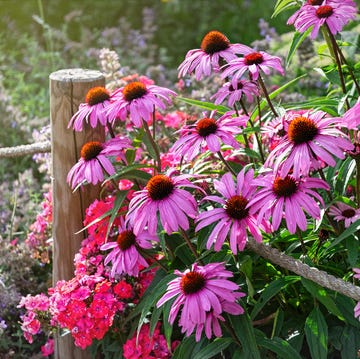There’s a lot more to lawn care than just mowing your lawn—especially when surprise intruders like crabgrass show up. If you’ve ever looked out at your yard in the middle of the summer and noticed a patch of thick, coarse grass that seemed to pop up overnight, chances are, that’s exactly what you’re dealing with.
This pesky weed can quickly take over thin or stressed areas of your yard, making it look messy and uneven. And while it’s one of the most common types of lawn weeds out there, it’s also one of the trickiest to control if you don’t catch it early. The good news is, with the right approach, you can tackle crabgrass before it spreads—and even prevent it from coming back next year. Here’s everything you need to know about how to get rid of crabgrass in your lawn.
What is crabgrass?
Crabgrass is a common and troublesome weed that often invades lawns and gardens, especially in warm climates. This annual grassy weed is known for its low-growing and fast-spreading nature, which allows it to quickly cover bare patches of soil. Crabgrass germinates from seeds in spring when soil temperatures warm up and, once established, thrives in sunny areas. It can quickly outcompete your desired grass species and make your lawn look patchy and unkempt.
How to get rid of crabgrass:
To effectively get rid of crabgrass, you'll want to employ a combination of manual methods, herbicides, and good lawn care practices.
"If crabgrass has become established in your lawn, proper lawn maintenance alone may not be enough," says Brian Shaunfield, a store manager for Lowe's. "As the next line of defense, you’ll need to use a pre-emergent herbicide, which works by eliminating the crabgrass seedlings as they germinate."
Pre-emergents are best applied in early spring before crabgrass seeds have a chance to sprout—timing is everything. Look for a window when soil temperatures reach about 55°F for several days in a row.
He also recommends using a post-emergent herbicide, which is designed to attack weeds that are already established and growing. Apply post-emergent later in the growing season, after weeds are established but before they have gone to seed. Be sure to choose a product that targets crabgrass specifically and follow the directions carefully to avoid damaging surrounding grass.
If you only have a few patches, pulling crabgrass by hand can be effective—just make sure to get the roots. It’s a bit of work, but catching it early can help prevent a bigger problem later on.
How to prevent crabgrass:
If you've been lucky enough to avoid crabgrass so far, there are proactive steps you can take to keep it that way and maintain a healthy, weed-free lawn.
"The best defense against crabgrass is a healthy lawn," Shaunfield says. "Unwanted grasses and weeds simply can’t thrive in a robust stand of grass." Follow these basic lawn-care guidelines to keep crabgrass from becoming a problem in your yard:
- Use a lawn mower to mow your lawn at frequent intervals to keep the grass at a fairly consistent length. Check the recommended mowing heights for your type of grass and cut your lawn at the highest recommended setting. Crabgrass requires plenty of light to germinate, so keep the grass as thick and long as possible to create shade near the soil surface. Cutting your lawn too close will produce patches where crabgrass and other weeds can germinate. This is especially important during late spring and early summer, when crabgrass seeds are looking for sunlight and space to grow.
- Don’t cut more than a third of the grass height when mowing. Removing more grass not only allows more light to reach weeds but can also injure the grass. Keeping your grass a bit taller helps it grow stronger and makes it harder for weeds to get a foothold.
- Water established lawns in long, heavy intervals rather than shallow, frequent ones. Watering on an irregular schedule and only when needed promotes deeper root growth that’s essential to healthy turfgrass. Remember that most established lawns require about 1 inch of water per week from rain or irrigation. If your lawn is newly seeded, water is shallow, more frequent intervals until the grass gets established. Consistent watering helps your grass stay lush and competitive, which is your best natural defense against weeds like crabgrass.
- Use fertilizer at least once a year, following the package instructions. A well-fed lawn is better able to grow thick and resist weed invasions. Just be careful not to over-fertilize, which can stress the grass or even encourage weed growth if done improperly.
By following these methods and staying vigilant, you can effectively manage crabgrass and maintain a beautiful, weed-free lawn that you can enjoy throughout the seasons!

Tierney McAfee is a freelance writer and Country Living and The Pioneer Woman contributor who covers entertainment, holiday & entertaining, food & drinks, design ideas, DIY, and more.













